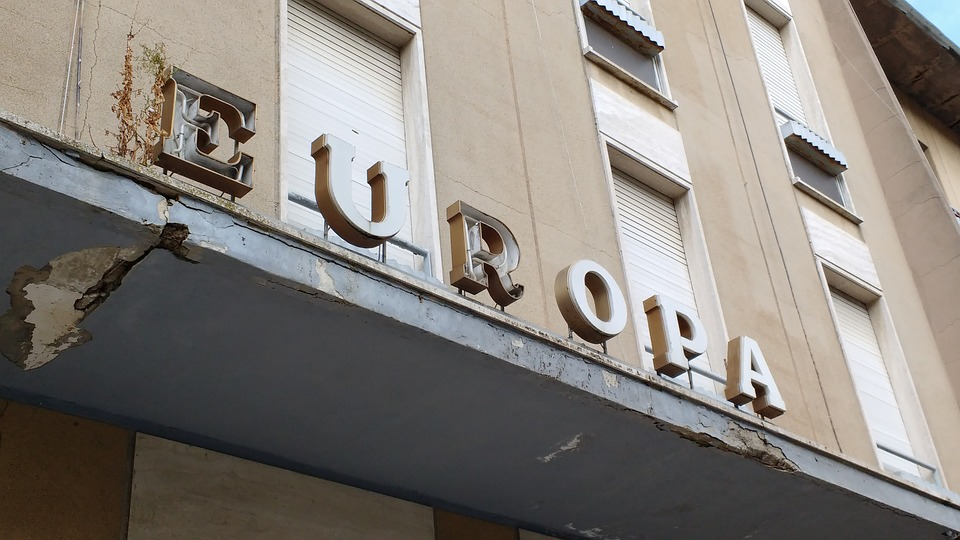Clara Bieler
The European Union–an economically integrated region that covers 4 million km² and has 508 million inhabitants. Wave by wave countries joined the union, adding to the socio-economic heterogeneity, uniting unequally developed economies and countries with different demographics. Currently, wages vary widely across the European Union: hourly pay averages €41.30 in Denmark, €39.10 in Belgium, €37.40 in Sweden, €6.80 in Lithuania, €5.00 in Romania and €4.10 in Bulgaria (according to Eurostat data for 2015). Similarly, social welfare and benefits range from abundant to non existent giving people the opportunity to benefit from the gray zones of the diverse system.
Swiss-German “Grenzgänger”
Switzerland may not formally be in the EU, but has still one of the closest trading relationships with the bloc, having signed free-trade agreements and pegged its currency. Linguistic similarity, attractive commuting routes and clearly regulated bureaucratic procedures allow Germans living in the area of Lake Constance and Breisgau region to become ‘cross border’ workers. Now in 2018 up to 300,000 workers cross the country’s borders every day for employment, benefitting from the cheaper rents and cost of living on the German side. Salaries are higher in Switzerland, whilst taxes and social security contributions are lower. Whilst there are provisions in place for Double Taxation, there is still an imbalance created by this arrangement. Germans work in Switzerland, but spend the majority of the money earned in another country. It’s an unintended imbalance.
Austria’s child benefits outflows
Austria’s newly elected conservative People’s Party has recently made its intentions public to cut benefits from children of Austrian residents not living in the country. A similar move had been debated by Germany the year before. The narrative is that children, whose parents work in Austria (which makes them residents and eligible to apply for benefits), living in low-wage countries like Romania, Bulgaria, Czech Republic, Slovakia, Hungary and Slovenia, should not be entitled to the same amount as Austrian children (114€ per month per child). In 2016, Austria transferred a total of 273 million € to EU and European Economic Area countries, supporting 132,000 children, whose parents work in Austria. Undoubtedly it benefits the children receiving it, even more so, than children living in Austria, given the differing purchase parities. It however adds to the inequality of the countries and systems.
Medical tourism, i.e. fertility and dental
In 2016, 488,000 foreign patients sought dental treatment in Polish clinics, according to the Polish Association of Medical Tourism. This trend is mirrored by other Central European countries: Hungary attracts patients hoping to save money on their dental treatments, whilst Czech Republic is now renowned for cataract surgery. Patients from the UK, Germany and Nordic countries can save up three times the cost by going abroad. In 2013, an EU directive further reinforced this by allowing patients to get refunds for medical treatments in other member states, if said procedures are covered by the national health scheme. However, this practice reinforced a divide.
 Spotting the differences between European countries is far from rocket science. Jumping the systems has become easier with the European Union framework enabling unprecedented mobility of workers and capital. Yet, the subject keeps returning to imbalance of welfare systems, cost of labor and cost of living between countries. The free mobility of labor and capital creates a potential for arbitrage. In an Adam Smithian fashion, individuals act on self interest–trying to improve their status quo. That is just natural survival instinct. But who bares the cost?
Spotting the differences between European countries is far from rocket science. Jumping the systems has become easier with the European Union framework enabling unprecedented mobility of workers and capital. Yet, the subject keeps returning to imbalance of welfare systems, cost of labor and cost of living between countries. The free mobility of labor and capital creates a potential for arbitrage. In an Adam Smithian fashion, individuals act on self interest–trying to improve their status quo. That is just natural survival instinct. But who bares the cost?
It is an opportunity for many citizens of countries, that have not recovered as quickly from their past, be it communism, economic collapse or exodus. It is a challenge for countries, whose welfare systems were not built with newcomers in mind, and who experience an outflow of money to other economies, rather than seeing it re-invested. It is an issue that should have been tackled the same way ‘Bologna’ (finding a way of transferring credits across different universities and equalizing diplomas) or ‘Schengen’ (finding a way to allow non-EU citizens to access all member-countries with one type of visa) were approached. Acknowledging differences and finding workarounds.
Photo credits:
Image 1 by andreame, ‘europe-eu-collapse-broken-european‘, CC0 Creative Commons
Image 2 by Etching created by Cadell and Davies (1811), John Horsburgh (1828) or R.C. Bell (1872), ‘Profile of Adam Smith’, Public Domain





